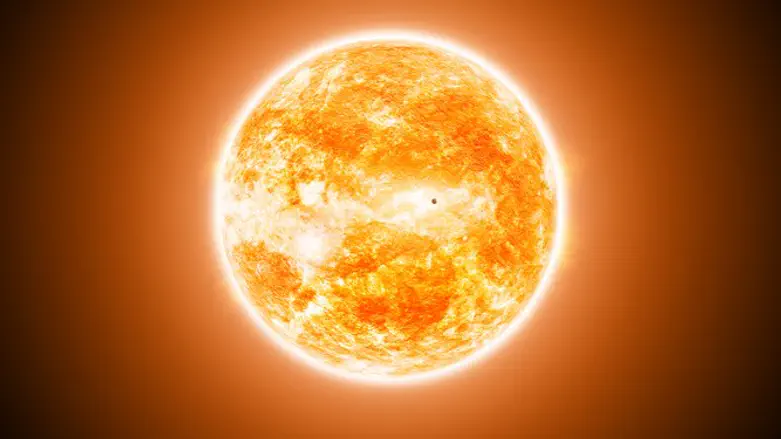
NASA's Solar Probe Plus mission to "touch the sun" will launch in 2018 from Florida's Kennedy Space Center on a Delta IV Heavy rocket.
The mission is expected to end in 2025 and will be renamed after Eugene Parker, the astrophysicist who conducted pioneering work on the particles flowing out of the sun's atmosphere, which he named the "solar wind."
This solar wind carries part of the Sun's magnetic field, and reaches Earth, where it slams into our planet's magnetic field.
The Parker Solar Probe will come closer than any man-made object has ever come to the Sun, arriving within 3.7 million miles of the Sun's surface, where temperatures are expected to reach 2,500 degrees Celsius.
The probe's goals are to expand our knowledge of the solar wind's origin and evolution, and to explore the "corona" - the upper layer of the Sun's atmosphere. It will also provide information on radiation during airline flights.
In addition, the probe is expected to provide information on the power grid and inform researchers of upcoming solar events - some of which could leave parts of the globe without power for nearly a year, and cause trillions of dollars in damage.
Special carbon-composite shields will protect the probe from the sun's heat.
In a statement, NASA said, "The spacecraft will explore the Sun's outer atmosphere and make critical observations that will answer decades-old questions about the physics of how stars work."
"The resulting data will improve forecasts of major space weather events that impact life on Earth, as well as satellites and astronauts in space."
"I like to call it the coolest, hottest mission under the Sun," NASA scientist Nicola Fox said. "We've been inside the orbit of Mercury and done amazing things, but until you go and touch the sun, you can't answer these questions. Why has it taken us 60 years? The materials didn't exist to allow us to do it. We had to make a heat shield, and we love it. Something that can withstand the extreme hot and cold temperature shifts of its 24 orbits is revolutionary."
"This is the first time NASA has named a spacecraft for a living individual," said Thomas Zurbuchen, the head of NASA's science mission directorate. "It's a testament to the importance of his body of work, founding a new field of science that also inspired my own research and many important science questions NASA continues to study and further understand every day. I'm very excited to be personally involved honoring a great man and his unprecedented legacy."
"The solar probe is going to a region of space that has never been explored before," Parker said. "It's very exciting that we'll finally get a look. One would like to have some more detailed measurements of what's going on in the solar wind. I'm sure that there will be some surprises. There always are."
The probe, which is being developed by the Johns Hopkins Applied Physics Laboratory, will carry a chip with his Parker's paper and photos on its mission to the sun. It will also carry a plate with whatever inscription Parker wishes to provide.
The mission was announced in 2009, and was then named "Solar Probe Plus." It will be NASA's first mission to the sun and its environs.
The last time a spacecraft came close to the star's surface was in 1976, when Helios 2 achieved perihelion - point of the orbit at which it was closest to the Sun - at 27 million miles (43 million kilometers).
The European Space Agency (ESA) plans to launch a 2019 mission to the sun, which will be called "Solar Orbiter."
